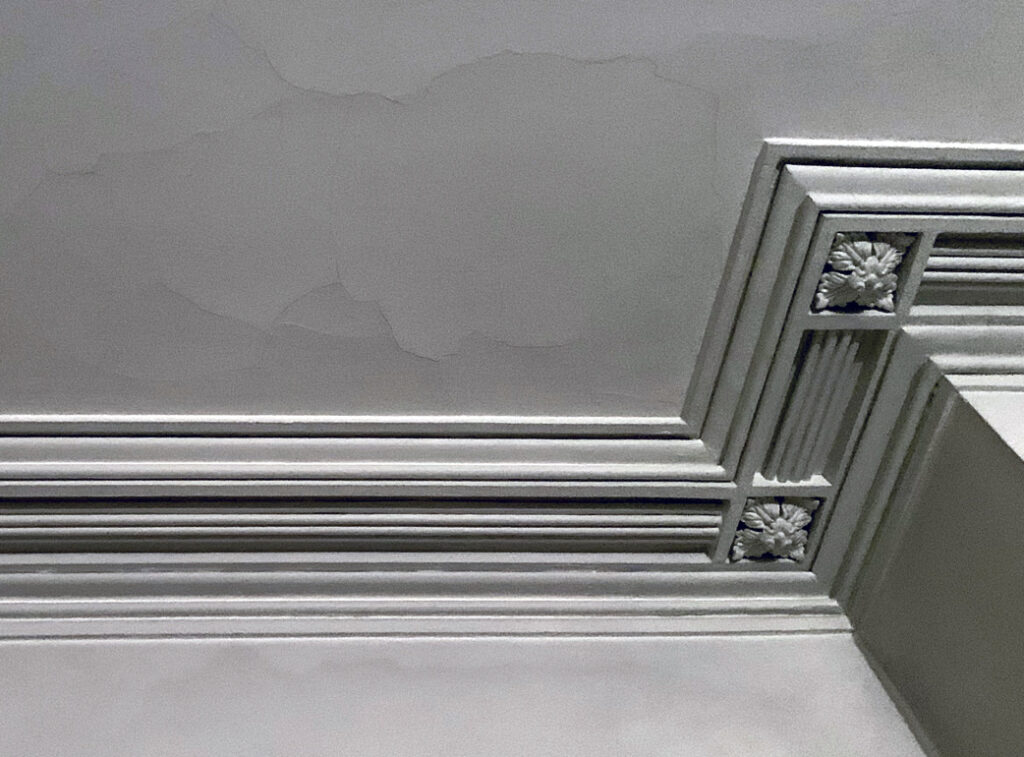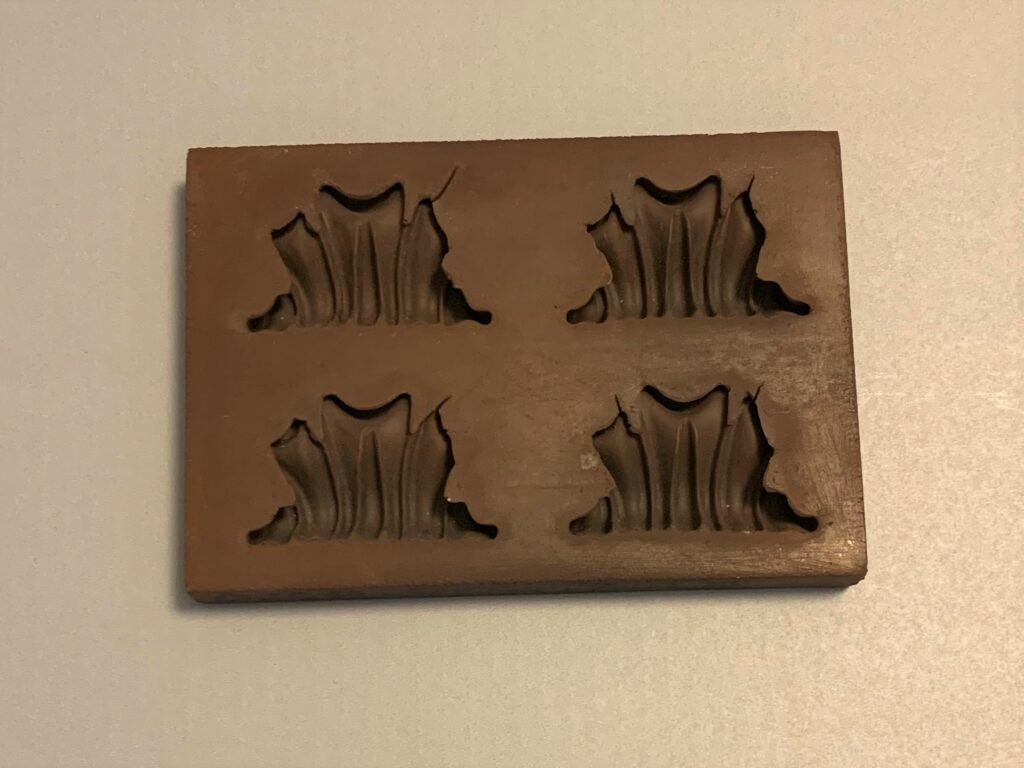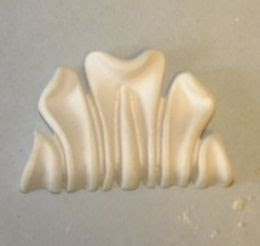Ornamental Plasterwork
Ornamental plasterwork was made of the materials used in the final coat on walls and ceilings. It was created using one of two methods. The first was to run a wooden mold through wet plaster directly on the wall (known as a “running cornice”).
The second was to cast plaster pieces using a mold and to install the pieces after they had set (known as “applied plaster”). Applied ornamental plaster was first designed and carved out of clay, then oiled and covered with wax to make a mold, most likely in a plasterer’s workshop. The wax mold was used to make casts or copies of the original design. The plaster casts were installed with a glob of wet plaster on the reverse and pressed into place. To create the molds, modern plasterers sometimes use rubber or silicone instead of wax, but the technique remains the same.
The cornices (or crown molding) and ceiling medallions (the decorative elements in the center of the ceilings, usually around a light fixture) in the Merchant’s House were made using both of these techniques.





